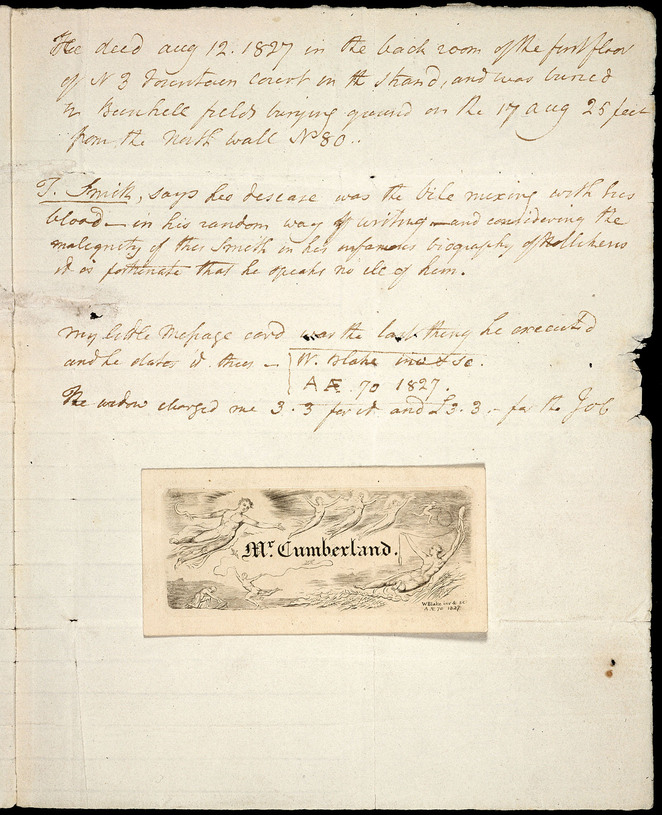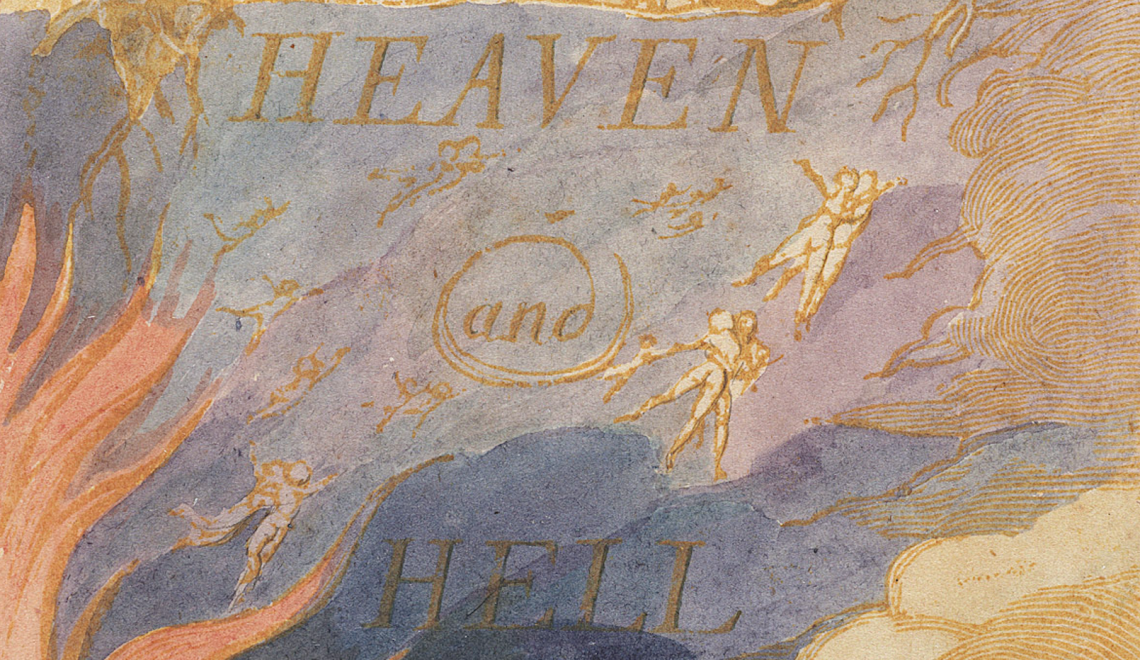The William Blake Archive is pleased to announce the publication of electronic editions of our first installment of Blake’s letters, the correspondence of his last two years, 1825-27, mostly with his friend, benefactor, and fellow artist John Linnell, who sponsored such projects as Blake’s engraved Illustrations of the Book of Job (1826) and Illustrations to Dante, on which he was still working when he died.
About ninety of Blake’s letters survive—an unknown fraction of the total. The surviving correspondence begins rather late in his career, in October 1791, the month before he turned 34, and ends, as far as we know, the month before his death at age 69 in August 1827—just three sentences to Linnell, to thank him for sending ten pounds and to indicate that his “journey to Hampstead on Sunday brought on a relapse . . . . however I am upon the mending hand to day & hope soon to look as I did for I have been yellow accompanied by all the old Symptoms.”
Blake traveled seldom and not very far, and he was little known beyond a small circle of British contemporaries, most of them in London. His circle of correspondents was narrow and the geographical circuit small. But his modest body of correspondence comprises an absorbing, revealing miscellany of reports on work in progress alongside friendly and not so friendly exchanges on matters of practical and intellectual substance. Occasionally they burst out into visions that amalgamate, in a characteristic Blakean vein, homely details, intensely energized prose, and inspired poetry.
The letters are, in any case, indispensable in preserving facts and contexts for his life and work that would be otherwise unknown and in showing him shift pragmatically from role to role in a very natural—and human—way, exposing facets of character and personality not always so apparent in his art. The letters feel closer to the externalities of everyday life than any other work from Blake’s hand, and some start out to be one very ordinary thing and end up being another quite extraordinary thing. If Blake is not an artist-thinker in correspondence with an international circle, he seldom puts pen to paper without interesting consequences for readers.
In his letter of 12 April 1827 to Linnell, Blake refers to a small card he plans to engrave for his friend of many years, George Cumberland. An impression of the card is attached to the final page of the letter. We are also publishing another impression of Cumberland’s card (see Separate Plates and Prints in Series, Designed and Engraved by Blake).
The Archive now contains fully searchable and scalable electronic editions of important manuscripts and series of engravings, color printed drawings, tempera paintings, water color drawings, and 85 copies of Blake’s nineteen illuminated books—all in the context of full bibliographic information about each work, careful diplomatic transcriptions of all texts, detailed descriptions of all images, and extensive bibliographies.
Due to recent security concerns related to Java browser plugins, the Archive has disabled its Java-based ImageSizer and Virtual Lightbox applications. Users can still view 100 and 300 dpi JPEG images as well as complete transcriptions for all works in the Archive. Text searching is also still available for all works in the Archive, and image searching remains available for all works except those in preview mode. In the coming months the Archive will implement redesigned pages that restore the features of ImageSizer and the Virtual Lightbox without the need for Java.
As always, the William Blake Archive is a free site, imposing no access restrictions and charging no subscription fees. The site is made possible by the University of North Carolina at Chapel Hill with the University of Rochester, the continuing support of the Library of Congress, and the cooperation of the international array of libraries and museums that have generously given us permission to reproduce works from their collections in the Archive.
Morris Eaves, Robert N. Essick, and Joseph Viscomi, editors
Ashley Reed, project manager, William Shaw, technical editor
The William Blake Archive


